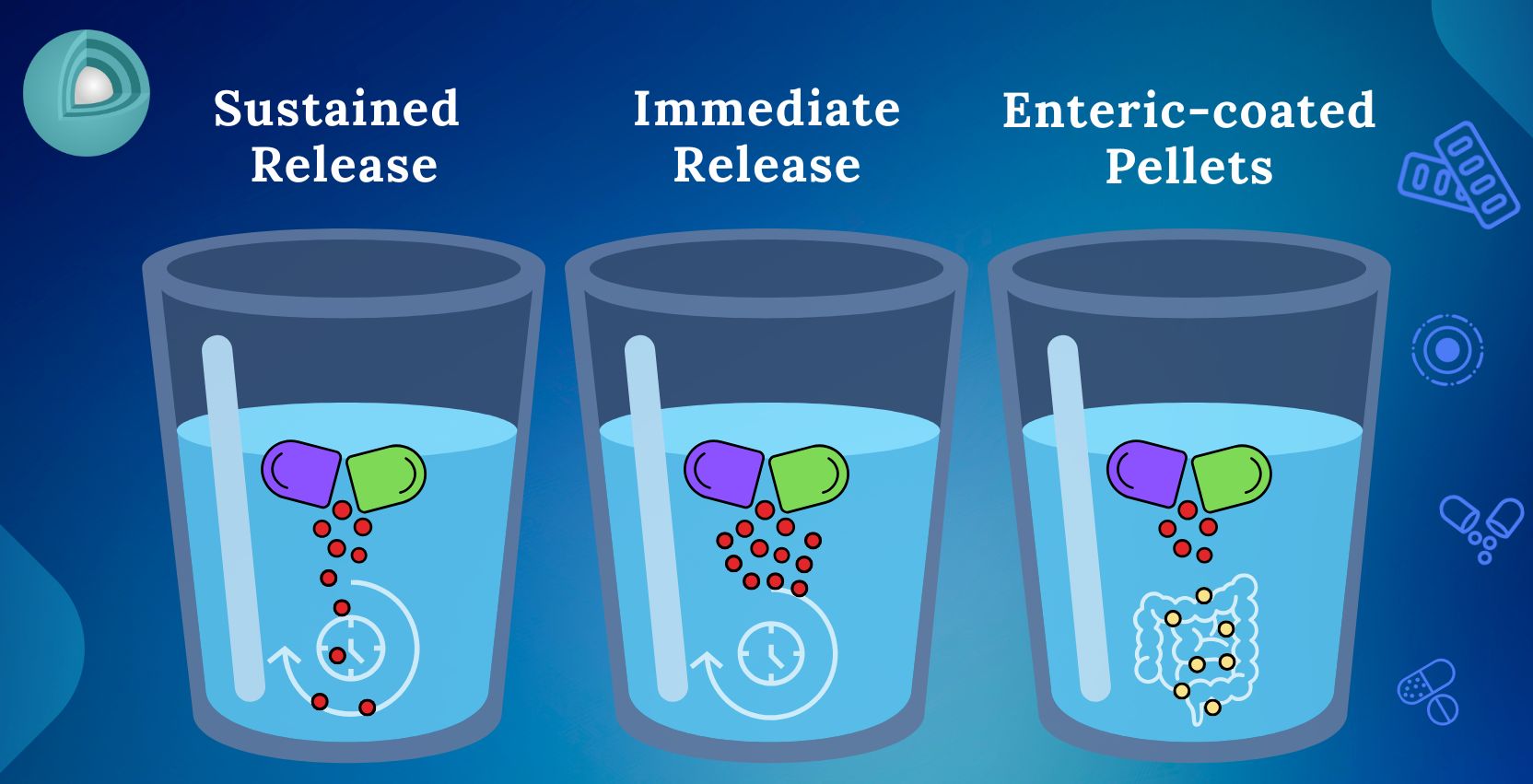
Floating Drug Delivery Systems with Floating Pellets Mechanism and Benefits
Introduction
Floating drug delivery systems stand out due to their simple and effective mechanism. Floating drug delivery systems are designed to have a low density compared to the gastric fluids, allowing them to float on the surface of the stomach contents for an extended period. As the formulation floats, it releases the drug in a controlled manner, ensuring prolonged drug availability in the stomach and upper GI tract.
Mechanisms of Floating Drug Delivery
There are several types of floating mechanisms utilized in FDDS:
1. Single Unit Systems (Hydrodynamically Balanced Systems - HBS): These systems rely on incorporating low-density materials into the formulation, allowing the dosage form to remain buoyant. Typically, such formulations use hydrocolloids, gel-forming agents, or polymers like hydroxypropyl methylcellulose (HPMC) that swell upon contact with gastric fluids, trapping air inside and thus floating.
2. Multiple Unit Systems (Floating Pellets/Beads): This system consists of multiple floating units such as pellets or beads. Even if some units are expelled from the stomach, the remaining ones can continue to float and release the drug. Multiple unit systems reduce the risk of dose-dumping and ensure a uniform drug release pattern.
3. Effervescent Systems: Effervescent systems rely on the generation of carbon dioxide gas due to the presence of effervescent agents like sodium bicarbonate, citric acid, or tartaric acid in the formulation. Upon contact with gastric acid, these ingredients react, releasing gas that becomes trapped within a gel layer formed by polymers like HPMC or Carbopol, allowing the dosage form to float.
4. Non-Effervescent Systems: These systems rely on the swelling of polymers when they meet gastric fluids. These polymers absorb the fluid and expand, decreasing the formulation's density and making it buoyant. Polymers like alginate or chitosan are commonly used in such systems.
Benefits of Floating Drug Delivery in Nutraceuticals
Floating drug delivery systems have significant advantages when applied in nutraceutical formulations, especially for substances that require controlled release or need to be absorbed in the stomach. Key benefits include:
• Improved Absorption of Nutrients: Nutrients such as vitamins, minerals, and certain bioactive compounds have better absorption rates in the stomach. FDDS prolongs the retention of these compounds, improving their bioavailability.
• Sustained Release: Floating systems can provide a sustained release of nutraceutical ingredients over an extended period. This is especially useful for compounds like caffeine, amino acids, and fat-soluble vitamins, which may benefit from slow, consistent absorption.
• Targeted Delivery: For certain nutraceuticals that exert their primary effects in the stomach (e.g., probiotics or compounds that affect gastric emptying), floating systems ensure targeted release in the right environment.
• Enhanced Efficacy: Nutraceuticals that require higher concentrations in the stomach for optimal efficacy, such as antioxidants or anti-inflammatory agents, benefit from a floating delivery system that maintains their presence in the stomach for longer periods.
Caffeine Floating Pellets
A practical application of FDDS can be seen in Umang’s caffeine-floating pellets. Caffeine, a stimulant often used in nutraceuticals for its energy-boosting properties, has been encapsulated in floating pellets to ensure a controlled and prolonged release. This delivery method allows for sustained energy levels over an extended period without the spikes and crashes associated with conventional caffeine products.
Floating Profile of Caffeine Pellets:
In water:
o 50% of the pellets float within 5 minutes in water.
o 100% of the pellets float within 10 minutes, ensuring efficient buoyancy and prolonged gastric retention.
Leaching in water:
o No significant leaching of caffeine occurs within the first 5 minutes, maintaining the integrity of the formulation for sustained release
Dissolution
The caffeine content is released gradually from the pellets over a 2-hour period, ensuring sustained caffeine availability and minimizing the chances of a rapid energy spike. This controlled release mechanism supports a steady, prolonged release profile that aligns with the needs of nutraceutical users
Conclusion
Floating drug delivery systems are a promising and versatile platform for enhancing the bioavailability and efficacy of drugs and nutraceuticals alike. By optimizing the retention time in the stomach, FDDS offers better control over release profiles and absorption, as illustrated by the caffeine-floating pellets. This technology opens new possibilities for developing advanced nutraceutical products with sustained and targeted benefits.







